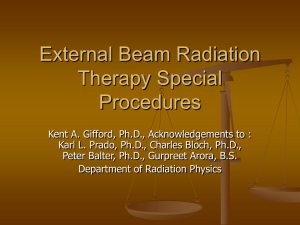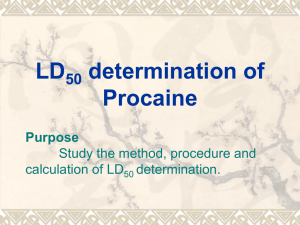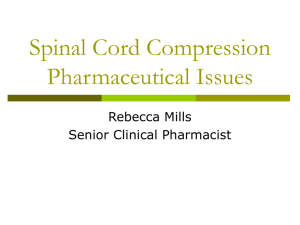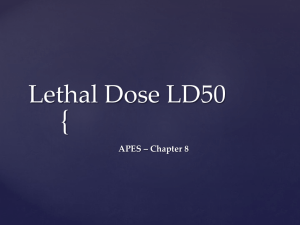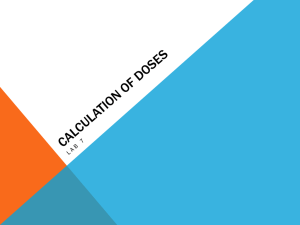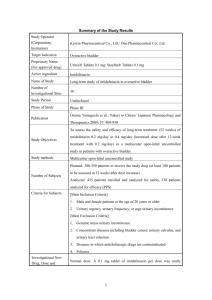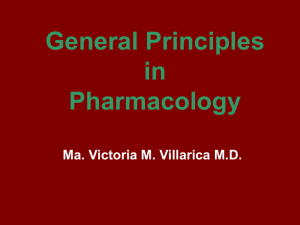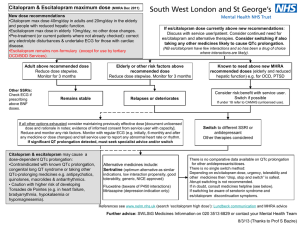Random and Mixed Effects ANOVA
advertisement
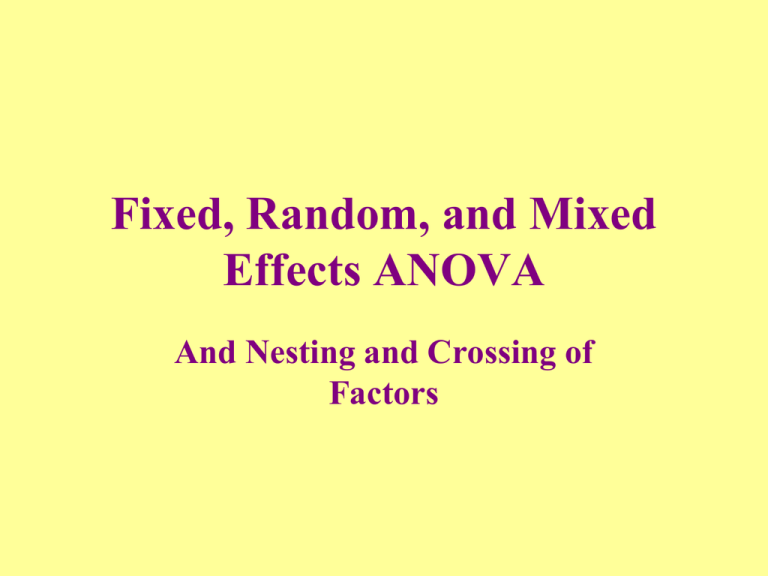
Fixed, Random, and Mixed Effects ANOVA And Nesting and Crossing of Factors Sampling Fractions • Sampling fraction, sf, for classification variable = levels in the sample divided by levels in the population. • If the sample includes every level in the population of interest, sf = 1. This is a fixed effect. • If the sample has a random set of levels, then sf = integer/ =0. This is a random effect. Fixed Effect • Diagnosis given to patient – Melancholic depression – Postpartum depression – Seasonal affective disorder • There are no other levels of diagnosis in which I am interested. • sf = 3/3 = 1. Random Effect • Dose of experimental therapeutic drug • Population of interest = all values from 0 to 100 units of the drug • I randomly select 5 values, using SAS – Do Value=1 To 5; Dose=round(100*Uniform(0)); Output; End; • sf =5/ = 0 . Mixed Effects • Factorial Design: Group (fixed) x Dose (random) • When there are random effects in the model, one need carefully consider how to compute the F ratios. • It will not always be MSeffect / MSerror How to Compute F • You want F to be Effect Other Stuff Other Stuff • See page 433 of Howell for the expected values of the mean squares for models that include random factors. Expected Values for MS • Main effect of group (fixed) – Group + Interaction + Error • Main effect of dose (random) – Dose + Error • Interaction of group and dose – Interaction + Error • Within cells error (MSE) – Error F for Main Effect of Group MSgroup Group Interaction Error F MSGroup Dose Interaction Error • If the null is true, group has no effect, and we expect the F to equal 0 Interaction Error 1 Interaction Error F for Main Effect of Dose MSdose Dose Error F MSerror Error • If the null is true, dose has no effect, and we expect the F to equal 0 Error 1 Error F for Main Effect of Interaction MSGroup Dose Interaction Error F MSerror Error • If the null is true, the interaction has no effect, and we expect the F to equal 0 Error 1 Error GLM’s Test Statement Use Test to specify the denominator for any effect where it should be other than MSE. proc glm; class group dose; model score = group|dose / ss3; Test H = group E = group*dose; title 'Mixed Effects ANOVA: Group is fixed, dose is random'; run; Power Considerations • Interaction mean squares typically have few degrees of freedom • This can lower power, because MS = SS/df, so the interaction MS tends to be large. • You may be able to enhance power by dropping the interaction term from the model. Pooled Interaction and Error • If the p for the interaction term ≥ .25, drop it from the model. • Its SS and df are now pooled SSGroup Dose SSerror with the error SS and df. dfGroup Dose dferror • You then use this pooled error term in the denominator of F. proc glm; class group dose; model score = group dose / ss3; title 'Main Effects Only, Interaction Pooled With Within-Cells Error'; run; Subjects as a Random Factor • What we call “error” is really the effect of subjects (nested within groups). • We pretend that the values for the subjects variable are a random sample of the population of interest. • If we considered subjects to be a fixed factor, we would not need ANOVA, we would have the entire population of interest. Nested Factors • Suppose one factor was Households and another was Neighborhoods. • Households would be nested within Neighborhoods – each household is in only one neighborhood. • If you know the identity of the household, you also know the identity of the neighborhood. Households Nested Within Neighborhoods Nborhd 1 Nborhd 2 Nborhd 3 H1 H6 H11 H2 H7 H12 H3 H8 H13 H4 H9 H14 H5 H10 H15 Crossed Factors • Here we have each possible combination of level of Factor A and level of Factor B. • For example, suppose that one factor is Teachers, the other is Schools, and each teacher taught at each of the three schools. School 1 School 2 School 3 T1 T1 T1 T2 T2 T2 T3 T3 T3 Between Subjects With this design, the subjects factor is nested within each level of the grouping factor(s). Group 1 Group 2 Group 3 S1 S4 S7 S2 S5 S8 S3 S6 S9 Within Subjects With this design, the subjects factor is crossed with the other factor. Condition 1 Condition 2 Condition 3 S1 S1 S1 S2 S2 S2 S3 S3 S3 Omega Squared • Its computation in model with random factors is different than in models with only fixed effects. • See pages 438-440 in Howell.



